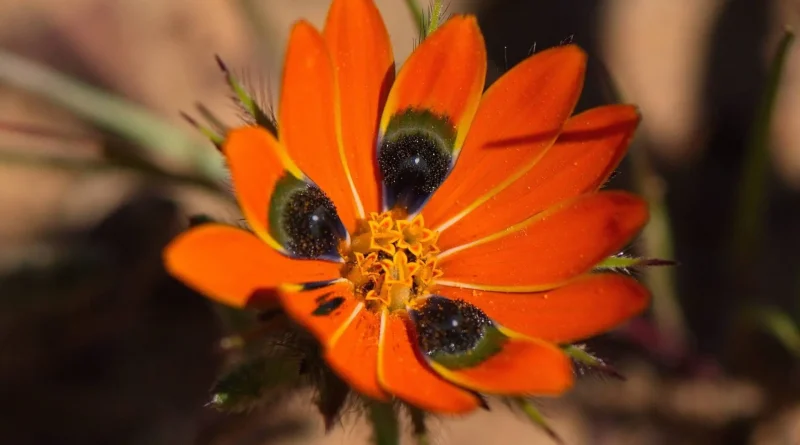This African flower produces fake female flies to attract male flies.
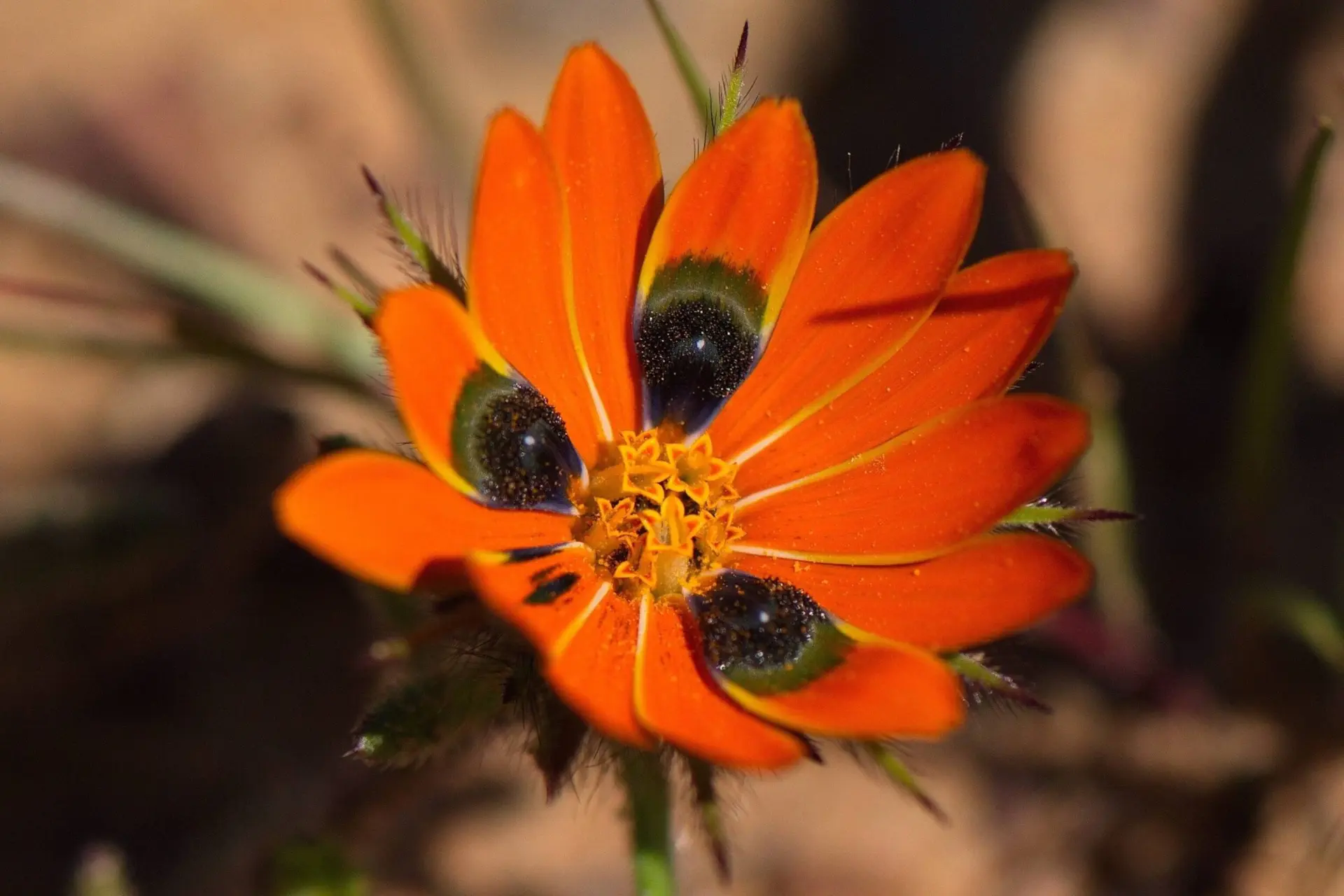
Scientists have discovered how a species of African flower creates fake male flies to attract and trap female flies on the surface of its petals.
The ability of the flower to mimic the attractive sexual features of pollinators to lure them towards its nectar has fascinated scientists for years.
Flowers can’t buy glasses and hats to change their appearance, so it’s bewildering how they use the only tool at their disposal, DNA, to perform convincing deceptions.
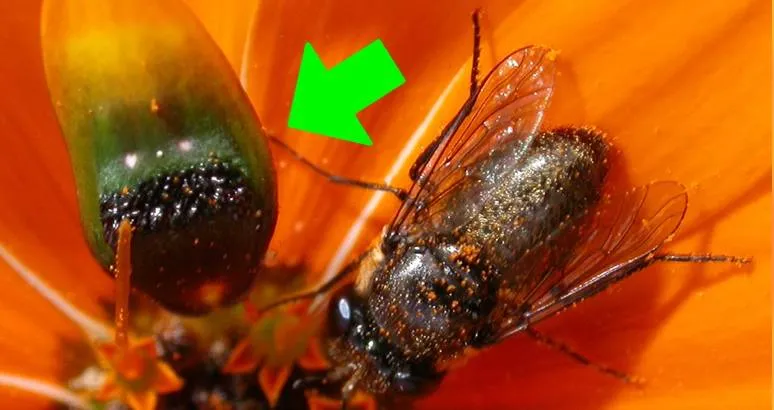
Real and fake flies on Gorteria diffusa flower in South Africa
Orchids are the most well-known flowers in this field of insect mimicry. They can have appearances and irresistible resistant odors for an unsuspecting insect visiting their petals, and by doing so, they coat the insect with orchid pollen, which the insect is obliged to transfer to other flowers.
According to Science Alert, orchids have evolved this characteristic for a long time and this approach has been so successful that all other members without this feature have disappeared long ago. That’s why scientists have studied Gorteria diffusa, a South African flower that has recently developed sexual mimicry in evolutionary history, and not all members of this species have this feature.
The petals of Gorteria diffusa flowers vary from light yellow to orange, and some have spots that form a circle around the center of the flower. The appearance of these flowers is very diverse, and in some of them, the spots have turned into green and black protrusions that look exactly like a pair of female flies waiting enticingly on the petals.
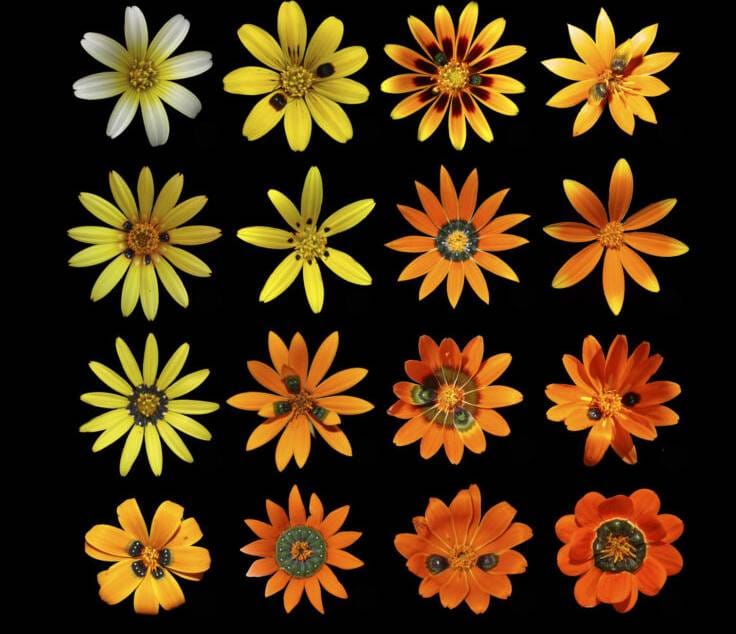
The Gorteria diffusa flower has a striking diversity in appearance.
Recently, researchers have tried to determine the order of evolution of various features and achieve such convincing deception, and they have found that the color initially evolved, followed by the fixation of random positions, and after that, the evolved tissue.
A new study led by Rom Klumburger, an evolutionary biologist at the University of Cambridge, examines how these three categories of genes, which were once not related to attractiveness for flies, have become part of an attractive plant strategy. Beverly Glover, a plant biologist and senior author of the study at the University of Cambridge, says, ‘This mina flower has not evolved the new fly gene. Genes that had previously had other functions in different parts of the plant work together to create a complex point on the petals that deceives male flies.’
One of the genes helps replace iron in the plant, another promotes root hair growth, and the third controls the timing of flower formation. Movable iron genes create points that guide pollinators to the center of the flower for the reward of nectar. This pollination strategy is a proven strategy that flowers have relied on long before sexual mimicry.
The combination of pigments produced (carotenoids that produce a yellow-orange color and dark blue-purple anthocyanins) produces a blackish-blue-green color that looks like fly cover color.
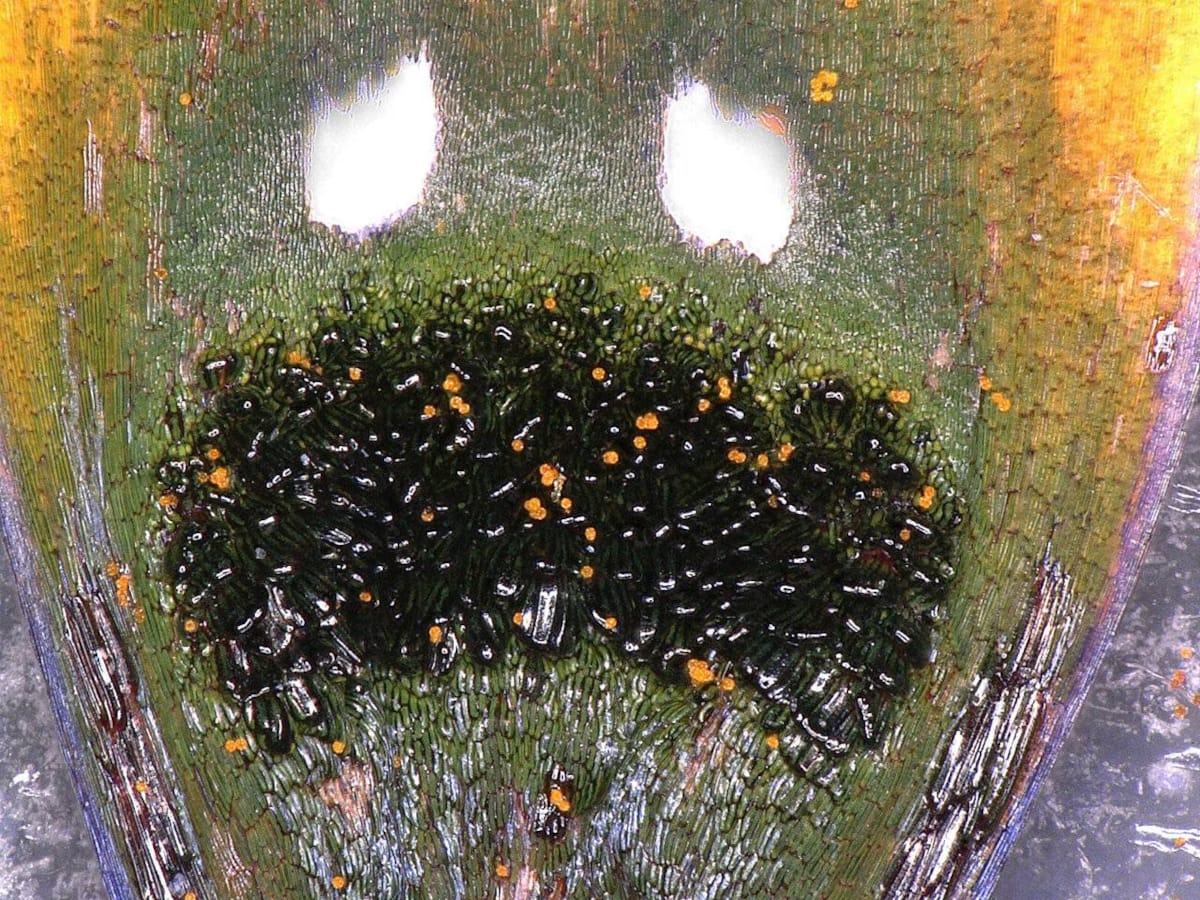
A microscopic image of the false flower fly of the Scathophaga furcata
A set of genes that usually play a role in limiting flower production were later used as an on-off switch for the guidance points towards the nectar, resulting in the emergence of false flies on flower petals in apparently random places.
If the strategy of attracting pollinators is to show the location of nectar, then a clear circle of points such as a sign works that shows the landing site. But when the strategy is sexual mimicry, it seems that the less, the better, for the flies.
The gene sequence that is usually involved in producing root hairs in plants is actually responsible for appearing as a deception and creating the three-dimensional shape and texture of fly-like spots on petals. The product of this gene is a protein called EXPA that softens the hard cell walls of the plant and causes irreversible expansion of the cell. This protein expands the available hairs on the petals and gives it a surface tissue. Researchers found that the gene did not function in non-speckled leaves and flowers, but was highly expressed in growing roots and speckled flowers.
Researchers also know that the gene producing EXPA protein has a role in highlighting something that would otherwise resemble a cardboard model of a female fly, as it is only expressed in the most convincing flowers and is not expressed almost completely in non-spotted or protruding petals among these flowers. Klunberger says “Male flies do not stay long on flowers with simple spots, but they believe false flies so much that they spend more time trying to mate and transfer more pollen to the flower and help pollination.”
It seems that the cooperation of the three gene sets has created an evolutionary compromise for these professors to change their appearance.

